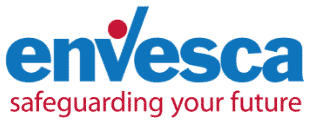What Does COSHH Stand For?
We often get asked on training courses, “What Does COSHH Stand For?” In this article, we answer this question and explain what COSHH is actually all about.
What Is COSHH?
COSHH is actually a set of health and safety regulations; the Control of Substances Hazardous to Health Regulations 2002. These regulations are abbreviated to COSHH and you generally hear people talking about COSHH substances which is generally a short-hand way of referring to substances with are hazardous to health. You may also hear people referring to asbestos, lead and radioactive materials as COSHH but this is not actually correct as they are covered by their own individual sets of regulations.

So we are talking about the type of product our cleaners use?
Yes, these are encompassed by the COSHH Regulations, but the regulations are much wider-ranging than just cleaning materials. COSHH substances can be chemical or biological in type and solid, dust, liquid, gas, fungal, viral or bacterial in nature! Not only that, but these substances are not necessarily ones you buy to use, they can be by-products of the work process such as welding fumes or wood dust or they can be naturally occurring such as bird droppings or diseases such as leptospirosis.
What do I need to do about them?
As with everything in health and safety you need to start with a risk assessment, specifically known as a COSHH assessment in this case. If it is a product you buy from a supplier you will need the safety data sheet to start this process. You also need to look at your work processes and identify if any of them create COSHH substances as a by-product, these by-products will not have safety data sheets so you will need to research their effects.
Once I have this information what do I do next?
You need to create a risk assessment that details what the hazards of contact with the product are, for example, is it toxic or flammable perhaps? Then identify who may be harmed by the substance and how they may come into contact with it. The affected person could get it on their skin, inhale it, swallow it or get it in their eyes. When you have identified this information you then need to put in place control measures to reduce the risk of exposure to an acceptable level.

How do I select control measures, surely PPE is enough?
PPE is the last resort. You must select control measures based on the hierarchy of control. This prioritises engineering control measures that isolate the substance, thus protecting the entire workforce rather than individuals. The best control measure is not to use the hazardous substance in the first instance! Work down the list below and try to achieve the measures closer to the top of the list first:
- Eliminate the use of a harmful product or substance and use a safer one.
- Use a safer form of the product, e.g. paste rather than powder.
- Change the process to emit less of the substance.
- Enclose the process so that the product does not escape.
- Extract emissions of the substance near the source.
- Have as few workers in harm’s way as possible.
- Provide personal protective equipment (PPE) such as gloves, coveralls and a respirator.
To learn more about COSHH Risk Assessment check out our training course Highfield Level 2 Award in the Control of Substances Hazardous to Health.
If you have a question or enquiry about health and safety, please call the team on 01452 502113 or complete our enquiry form.
Find this helpful?
Signup to our email notifications to receive alerts when we publish new blogs. We promise not to spam your inbox, you will just get a short snappy intro to Health and Safety articles we think you will love.
"*" indicates required fields

7 Secrets to Risk Assessment
If you’ve got a question or query, please contact our super friendly team, they will be delighted to help you!
Simply get in touch via phone or email.

Free
Resources &
Downloads
Informative. Useful. Practical.
Here at Envesca we believe that we are good at giving proactive, sensible and useful advice. Below you will find some free resources that you can download on a host of subjects that will help you and your business.
Training Available
Envesca offer a number of different training courses, which offer advice and guidance on these topics.




